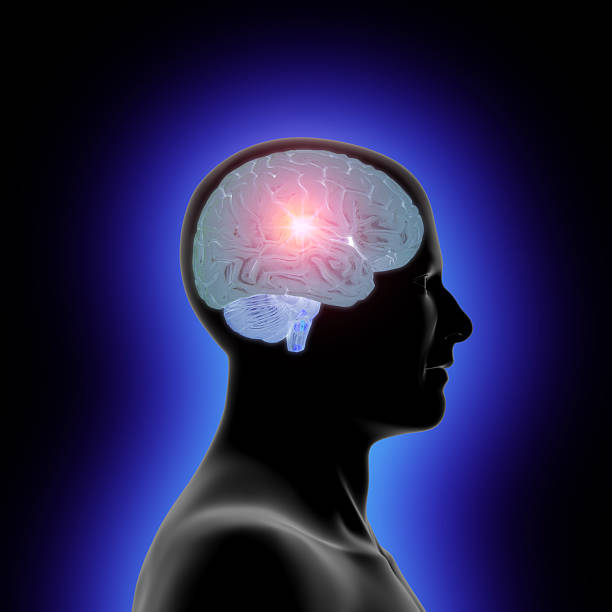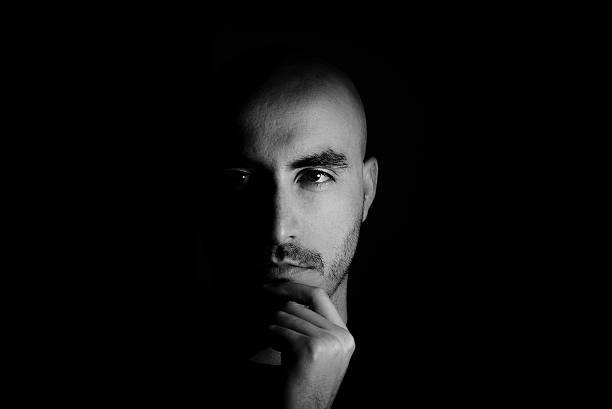You sit in a coffee shop, irritated because your friend is running late again. You feel the familiar tightening in your chest, the quiet urge to withdraw, to not say anything and just bottle it up. Somewhere inside, a voice says, Don’t make a fuss. You don’t consciously know why that reflex is there, but it’s automatic.
Or maybe you meet someone who’s incredibly warm and kind, and you instantly feel safe—maybe too safe, so you instinctively push them away. Or perhaps you can’t explain why criticism makes your heart race, or why silence from someone you love feels unbearable.
These aren’t just quirks. These are echoes.
Long before you had the words to explain yourself, before you even understood the language of the world around you, your brain was learning. Your heart was recording. Your nervous system was adapting. And even though you’ve outgrown your childhood clothes, the patterns woven into your body and mind have never really left.
Science now confirms what poets and psychologists have whispered for generations: your childhood shapes the architecture of who you are—and much of it happens beneath your awareness.
Why the Brain Remembers What You Can’t
To understand how childhood continues to shape you, we have to understand a remarkable truth about the human brain: it develops in direct response to the environment.
You weren’t born fully wired. In fact, at birth, your brain was more like a construction site than a finished building. Billions of neurons were waiting for instruction. Through a process called neuroplasticity, your brain was sculpted by experience. Connections strengthened through repetition. Others were pruned away. And in the earliest years, the brain’s adaptability was at its peak.
The environment didn’t just influence your behavior—it literally became part of your neural wiring.
By the time you were three years old, your brain had grown to 80% of its adult size. But this growth wasn’t just physical—it was emotional, relational, and behavioral. Your earliest experiences formed internal templates for safety, love, danger, and trust. These templates—though invisible—still guide your reactions today.
Attachment: The First Language You Spoke
One of the most powerful forces shaping your early brain wasn’t a fact you memorized or a lesson you were taught. It was a relationship.
Psychologists call it attachment, and it begins to form within minutes of birth. When a baby cries, and a caregiver responds—holding, feeding, soothing—the infant learns a fundamental truth: The world is safe. I am seen. I matter. When this happens consistently, the child develops what’s called secure attachment.
But if the response is inconsistent, absent, or frightening, different templates form. Some children learn not to expect comfort and become emotionally self-reliant. Others become anxious, unsure when or if their needs will be met. Some, exposed to neglect or abuse, come to see connection itself as dangerous.
These attachment patterns don’t stay in the crib. They form the bedrock of how we relate to others throughout life. The clingy partner. The avoidant friend. The person who sabotages intimacy. These are not character flaws—they are survival strategies born in childhood.
The Body Keeps the Score
Even when your conscious mind forgets, your body remembers. Traumatic or emotionally charged childhood experiences can leave imprints not just in memory, but in muscle tension, hormone levels, and nervous system reactivity.
Dr. Bessel van der Kolk, in his seminal book The Body Keeps the Score, argues that trauma isn’t just a story about the past—it’s a present-day reality that lives in the body. A raised voice might trigger a fight-or-flight response even if no threat is present. The smell of alcohol, a slammed door, or a particular look might unleash a cascade of stress hormones, taking you back to a place you thought you’d left behind.
This is why childhood adversity can lead to increased risk of anxiety, depression, chronic illness, and even heart disease. The Adverse Childhood Experiences (ACE) study, one of the largest public health studies in the U.S., found a direct link between early emotional and physical hardship and long-term health outcomes.
The findings were staggering: people with high ACE scores were far more likely to experience addiction, autoimmune disorders, and even cancer.
Your childhood doesn’t just shape how you feel—it shapes how you heal.
When Praise Becomes Pressure
Even in loving, stable homes, children can develop coping patterns that follow them into adulthood in surprising ways.
Say a child is praised relentlessly for being “the smart one.” Over time, they might begin to fear failure so deeply that they stop trying anything new. Or maybe they were always the “peacemaker,” expected to smooth over family tension. As adults, they might struggle to express their own needs or say no, afraid of causing conflict.
These roles—golden child, scapegoat, caretaker—can become unconscious identities. They help children navigate the family dynamic, but often at the cost of their authentic self. As adults, we might not even realize we’re still playing these parts, driven by scripts we didn’t write.
It’s not about blame. It’s about understanding.
Repetition Compulsion: Why You Keep Dating Your Parents
One of the more startling discoveries in psychology is a phenomenon known as repetition compulsion. It’s the unconscious drive to recreate early emotional dynamics in adult relationships—even painful ones.
You might be drawn to emotionally distant partners, not because you want to suffer, but because some part of you is trying to fix the past. You’re playing out an old story with the hope that this time, the ending will be different.
It’s not logical—it’s neurological.
The brain seeks familiarity. What feels emotionally familiar—even if it’s unhealthy—can feel safer than the unknown. That’s why people with chaotic childhoods often feel unnerved by stability. Why those raised around conflict might provoke it unconsciously.
Until these patterns are made conscious, they run the show from behind the scenes.
Inner Voice, Outer World
The way your caregivers spoke to you becomes the way you speak to yourself. If you were nurtured, encouraged, and allowed to make mistakes, your inner voice likely mirrors that kindness. But if you were constantly criticized or ignored, your self-talk might be harsh, anxious, or dismissive.
That voice isn’t you. It’s a recording—one that began before you could choose what to believe.
Changing that voice takes time. But the first step is recognizing it isn’t the truth. It’s a script. And you can rewrite it.
Neuroplasticity: Hope Woven into the Brain
Here’s where the story bends toward hope.
For all the ways childhood shapes us, it doesn’t define us. The same brain that was shaped by early experience is also capable of rewiring. This is the miracle of neuroplasticity—the brain’s ability to change its structure and function in response to new experiences.
Therapy, supportive relationships, mindfulness, movement, even journaling—all of these can reshape neural pathways. They can soften the grip of the past and carve new patterns of thought and feeling.
It’s not about erasing your childhood. It’s about integrating it. Turning the pain into understanding. The confusion into clarity.
The science is clear: healing is possible. And it begins with awareness.
The Generational Loop
What you don’t heal, you may pass on.
Parents don’t intentionally harm their children. Often, they’re just repeating patterns they inherited. A father who never learned to express emotions may raise a son who thinks tears are weakness. A mother who grew up in chaos may become overly controlling, trying to avoid the unpredictability she once knew.
Understanding your own childhood isn’t just an act of self-reflection. It’s an act of generational transformation.
When you become conscious of your patterns, you create space to choose differently. To break cycles. To raise children who don’t have to heal from their upbringing.
Your Story is Not Set in Stone
There’s something powerful about knowing that the story your brain began writing in childhood can still be edited. The patterns wired into you before you could speak do not have to define the rest of your life.
Science doesn’t offer a quick fix. But it offers understanding. And with understanding comes choice.
You are not doomed by your past. You are shaped by it, yes—but you are also the shaper.
Every moment of self-awareness, every healthy relationship, every act of self-compassion sends a message to your brain: This is the new pattern. This is the new way of being.
You can mourn what you didn’t get. You can name the hurt. And then—miraculously—you can give yourself what was missing.
When You Remember Differently, You Live Differently
Memories aren’t just facts; they’re feelings. And your brain doesn’t store them like files in a cabinet. It reactivates and reshapes them every time you recall them. This means that healing isn’t about forgetting—it’s about remembering differently.
When you revisit a painful childhood moment in therapy, for instance, you’re not just reliving it—you’re offering it new context, new meaning. You’re saying to your younger self: You weren’t wrong to feel that way. You weren’t broken. You were surviving.
This kind of emotional reprocessing actually changes how the memory is stored. The amygdala, the brain’s fear center, quiets. The hippocampus, which gives memories context, becomes more active. The story changes. And with it, your future.
Conclusion: The Past Isn’t Over, But It’s Not Everything
Your childhood is not a place you leave behind. It’s the soil your adult self grew from. And like all living things, you were shaped by the environment—but you are not limited by it.
Inside your brain, the past is always present—but so is the possibility of change. The science of development, trauma, and neuroplasticity all converge to tell a single, beautiful truth:
You are not your wounds. You are the one who heals them.
And no matter how deep the imprint, your brain—and your heart—can still rewrite the story.






